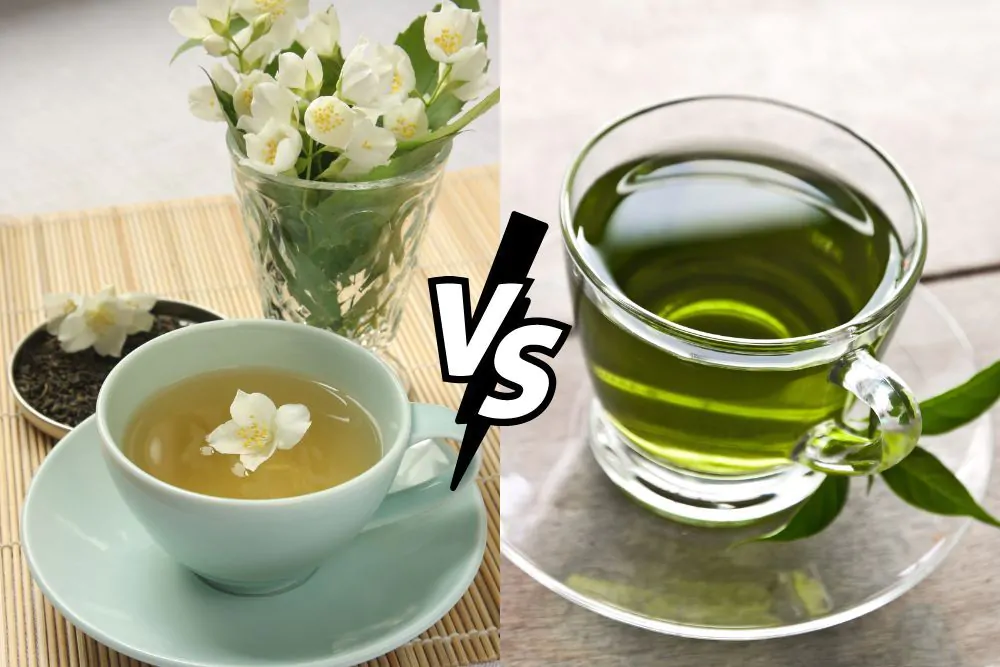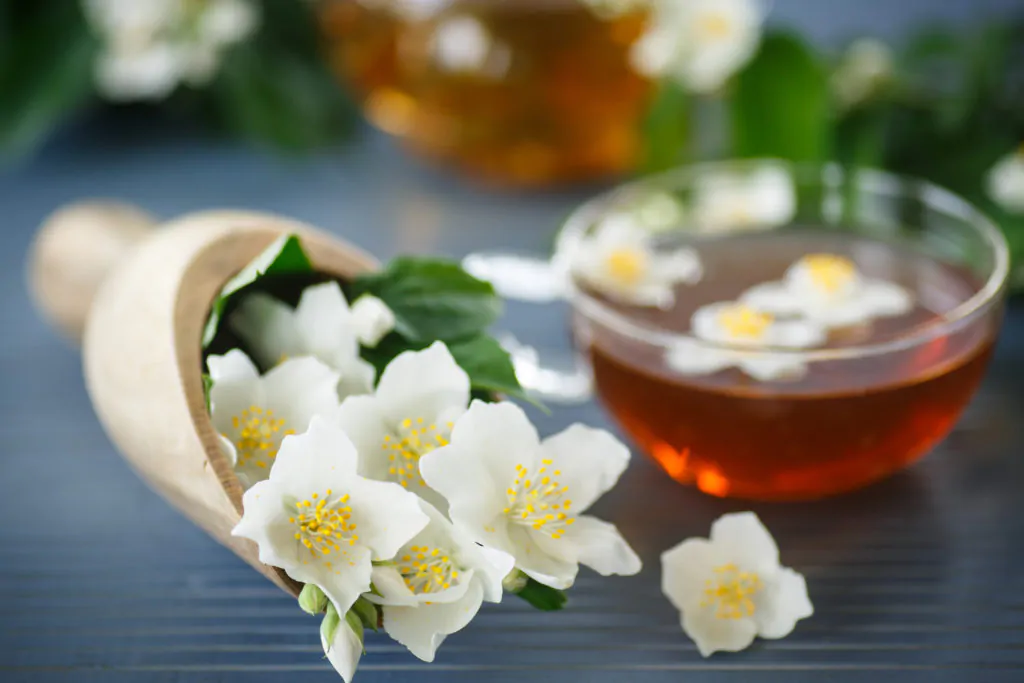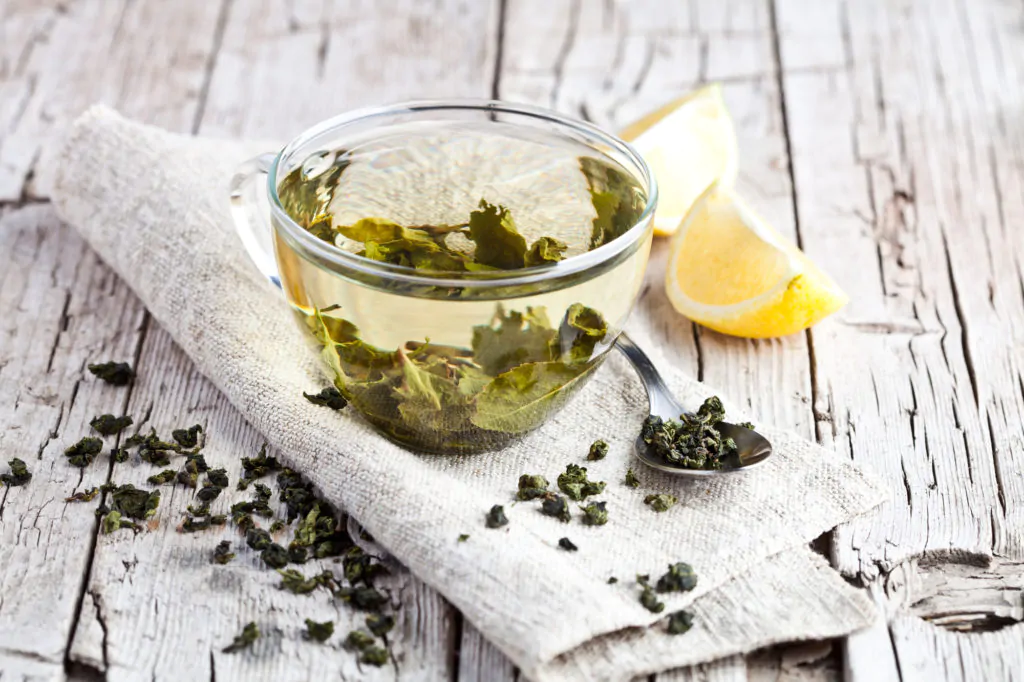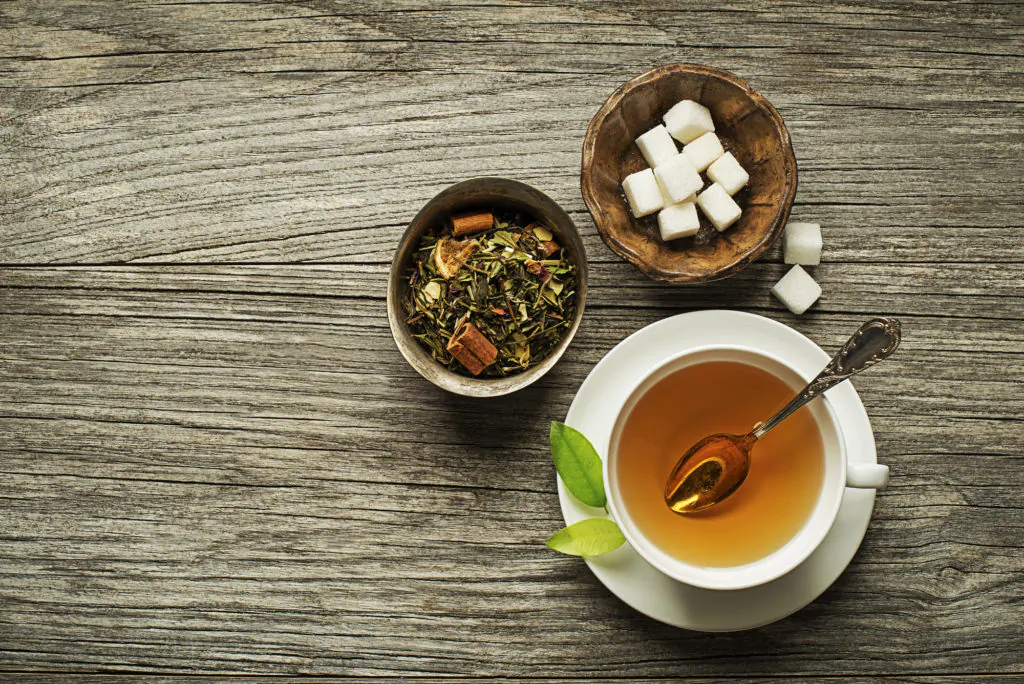Jasmine tea vs green tea: trying to decide between them? Read our handy guide and make your decision easier.

Fancy a cuppa? Jasmine tea and green tea are two popular choices when it comes to a brew. These types of tea share some similarities, but there are important differences as well. In this article, we’ll give you the lowdown on both tea blends.
Tea drinkers: read on to find out more on the jasmine tea vs green tea debate.
What Is Jasmine Tea?

Jasmine tea is a flavored tea that often has green tea as its base, but not always. It’s made from any type of tea produced from the Camellia sinensis plant.
Whatever the base, the tea is scented with jasmine flowers or flavorings, transforming it into jasmine tea.
The green tea base variety is the most common, but white, black, and even oolong tea mixed with jasmine are available. For example, white tea infused with jasmine flowers is super delicate and extrafloral.
Black tea blended with jasmine blossom produces a more sophisticated tea than traditional black tea. In contrast, oolong jasmine tea is greener and lighter than straightforward oolong.
Scenting Tea Leaves With Jasmine
There are several methods for scenting tea leaves with jasmine.
1. In a warm room, place fresh jasmine flowers on a tray below a tray of tea leaves. Replace the jasmine often, giving the tea a light aroma and taste. Dry the tea and then package it. A laborious and expensive method, but the result is a quality product.
2. This is a cheaper method that uses the leftover, wilted jasmine flowers from the first process. Mix the flowers with green tea leaves to impart their floral scent. Then remove the flowers, dry the tea, and package it.
3. Spring tea buds are picked and hand-rolled into pearl-like shapes, then heat-infused with jasmine flowers. As a result, the tea absorbs a delicate, floral scent.
Whatever the method, the end result is a fragrant loose-leaf tea. The scent should be nothing but fresh jasmine flowers. And the taste? Mellow, with a smooth floral flavor and a hint of honey.
A side note: some jasmine tea is flavored with natural jasmine essential oil or made using jasmine flavor. Tea scented with jasmine oil or flavoring is deemed inferior to traditionally-produced jasmine green tea.
What Is Green Tea?

Green tea originates from the plant species called Camellia sinensis. That’s the same species that black tea is made from. Surprised?
It’s how the tea leaves are processed, which dictates whether the tea is “green” or “black.”
There are two varieties of Camellia sinensis: one is native to China, and the other was first discovered in Assam, India. The former is generally used to produce green and white teas, the latter strong black teas.
To make green tea, leaves are harvested, heated by pan-firing or steaming, and then dried. That last step prevents fermentation and too much oxidation from occurring. If there’s too much oxidation, the tea leaves turn brown, and the fresh flavor changes.
The specific method used determines the type of green tea. For instance, Matcha is powdered, Sencha is steamed, and Houjicha is roasted. Chinese and Japanese green tea differ in the steaming process.
When green tea is brewed, the color is green, light brown, or yellow. And the taste ranges from grassy and toasted if pan-fired to sweet and vegetal if steamed.
Brewed correctly, green tea is relatively light in color and mildly astringent.
For comparison, black tea leaves are fully oxidized before being processed and dried. Because of that, the leaves are much darker, giving black tea the rich color and malty flavor it’s known for.
In terms of caffeine, green tea lies somewhere in the middle of the spectrum. For example, herbal tea has zero caffeine content, and black tea has the most caffeine compared to other types of tea (but less than brewed coffee).
Green tea contains about half the amount of caffeine found in black tea. But for specific figures, it depends on the type of green tea in question.
Beginner-Friendly Jasmine Tea
Are you a newcomer to the world of tea? Jasmine tea could be the one for you. Heavily scented, the floral notes are the primary flavor you’ll taste.
The tea flavor is somewhat masked. Depending on your preference, that may be a good or a bad thing.
To Sugar or Not to Sugar

Jasmine tea is perfumed and often requires zero sugar or honey. By contrast, drinking green tea sweetener-free can be a struggle for some people. Green tea’s astringency means sugar or honey is often preferred.
Jasmine Tea vs Green Tea: Price
Cost-wise, pure green tea is slightly cheaper than jasmine tea. Only high-quality tea leaves are used to produce the former. With jasmine tea, lesser quality tea leaves are used – lower grade leaves don’t influence the flavor too much. The price is therefore less. So why is jasmine tea costlier overall?
Because growing and picking jasmine flowers is expensive. However, if artificial flavorings are used, the price falls.
Overall, it depends on the quality of the tea leaves and whether actual jasmine flowers are used.
Health Benefits of Jasmine Tea
Jasmine flowers don’t have any particular health benefits. Jasmine-infused tea is only as healthy as the base tea it’s made from.
So, if your cup of jasmine tea is made from a base of green tea, the health benefits are the same as that of green tea. The same goes for caffeine content.
And what are the health benefits of green tea?
Green tea is rich in polyphenols, a natural compound that’s said to have potential health benefits. For example, it’s thought to improve digestion issues.
Green tea is also a superfood that contains the catechin epigallocatechin-3-gallate (EGCG). And what is a catechin? A natural antioxidant that’s said to reduce inflammation and protect cells from damage.
Green tea may also boost brain function and fat burning, and lower cholesterol. And there are other health claims, such as weight loss and reduced risk of cancer and heart disease.
Note: these claims are largely unsubstantiated by evidence.
Jasmine Tea Pros and Cons
Pros
- Mellow and floral flavor profile
- Entry-level tea requiring no sugar
- Boasts the potential health benefits of green tea (if that’s your base tea)
Cons
- Tea flavor is less prominent
- Pricier than green tea
- Artificial flavorings produce an inferior product
The Final Word on Jasmine Tea Vs Green Tea
Global tea revenue is expected to grow by 6.9% each year until 2023 – it’s a popular beverage. There are a host of things to think about for all you tea enthusiasts out there joining the jasmine tea versus discussion. These range from flavor to price.
Jasmine tea is a scented tea with a floral flavor. Whereas green tea is vegetal, astringent, and may need sweetening.
But really, you don’t need to choose between these two types of tea. Taste-wise, they’re noticeably different, so if you fancy a cup of tea, consider alternating between them.
Jasmine tea vs green tea: trying to decide between them? Read our handy guide and make your decision easier.
